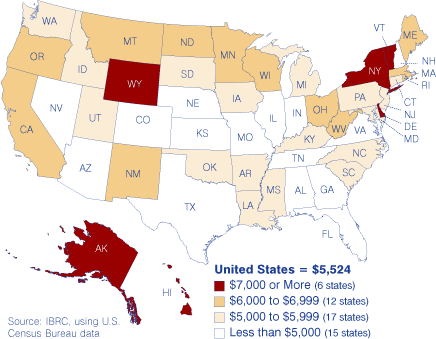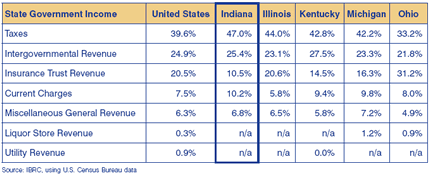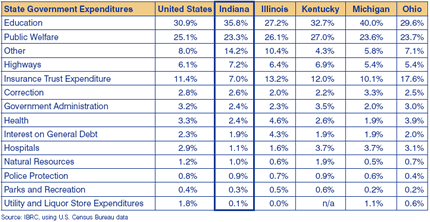Financing State Governments in the United States
Editor's Note: Taxes provide the primary means of support for government, but some states rely on those taxes more than others. Recent data from the U.S. Census Bureau reveal the differences and similarities among our 50 states.
As shown in Figure 1, taxes are only one source of Indiana's government income and, nationwide, state governments vary in their reliance on taxes. Taxes account for at least half of all state revenue in Connecticut (56 percent) and Minnesota (50 percent), while they are less than 30 percent of revenue in four states (Wyoming, Oregon, South Dakota and Alaska). In Indiana, taxes account for 47 percent of total revenue.
Figure 1: Indiana State Government Income, 2005
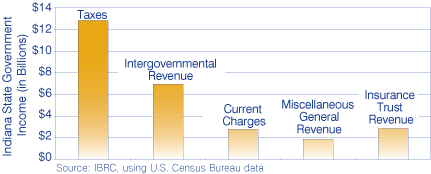
Why do taxes make up a larger share of Indiana's state government revenue than the national average of 40 percent? Isn't Indiana typically considered a low-tax state? Collecting $27.3 billion in total revenue for 2005, Indiana ranked 18th in the nation. However, if one looks at total revenue per capita, Indiana ranks 45th (see Figure 2). So, while taxes make up a larger portion of Indiana's total revenue pie, our pie is smaller on a per capita basis than all but five other states (Florida, Arizona, Texas, Tennessee and Georgia).
Figure 2: State Government Revenue Per Capita, 2005
Table 1 shows the different income streams of state governments in the Midwest. Taxes are the largest source of government income followed by intergovernmental revenue in four of the five states (insurance trust revenue ranks second in Ohio). Insurance trust revenue is the money a state takes in to administer programs such as public employee retirement systems, unemployment compensation and other social insurance systems. It includes payroll taxes that finance such systems as well as any earnings on assets held or invested by these funds.
Table 1: Types of Income as a Percent of Total Revenue in the Midwest, 2005
With the April 15 tax filing deadline looming, people are perhaps predisposed to think of taxes in terms of the income tax, but the taxes that finance state government take several forms. The individual income tax is the largest source of tax revenue in 27 states; however, the largest source of tax revenue in Indiana, along with 17 other states, is the general sales tax (see Figure 3).
Figure 3: Taxes Collected by Indiana State Government, 2005
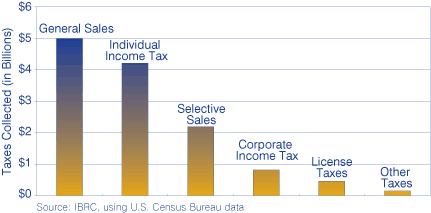
The money state governments collect pays for the services we expect them to provide. Table 2 shows just how government expenditures break down for Indiana and its Midwestern neighbors. The $9.47 billion spent on education in Indiana accounts for 36 percent of all state government expenditures.

